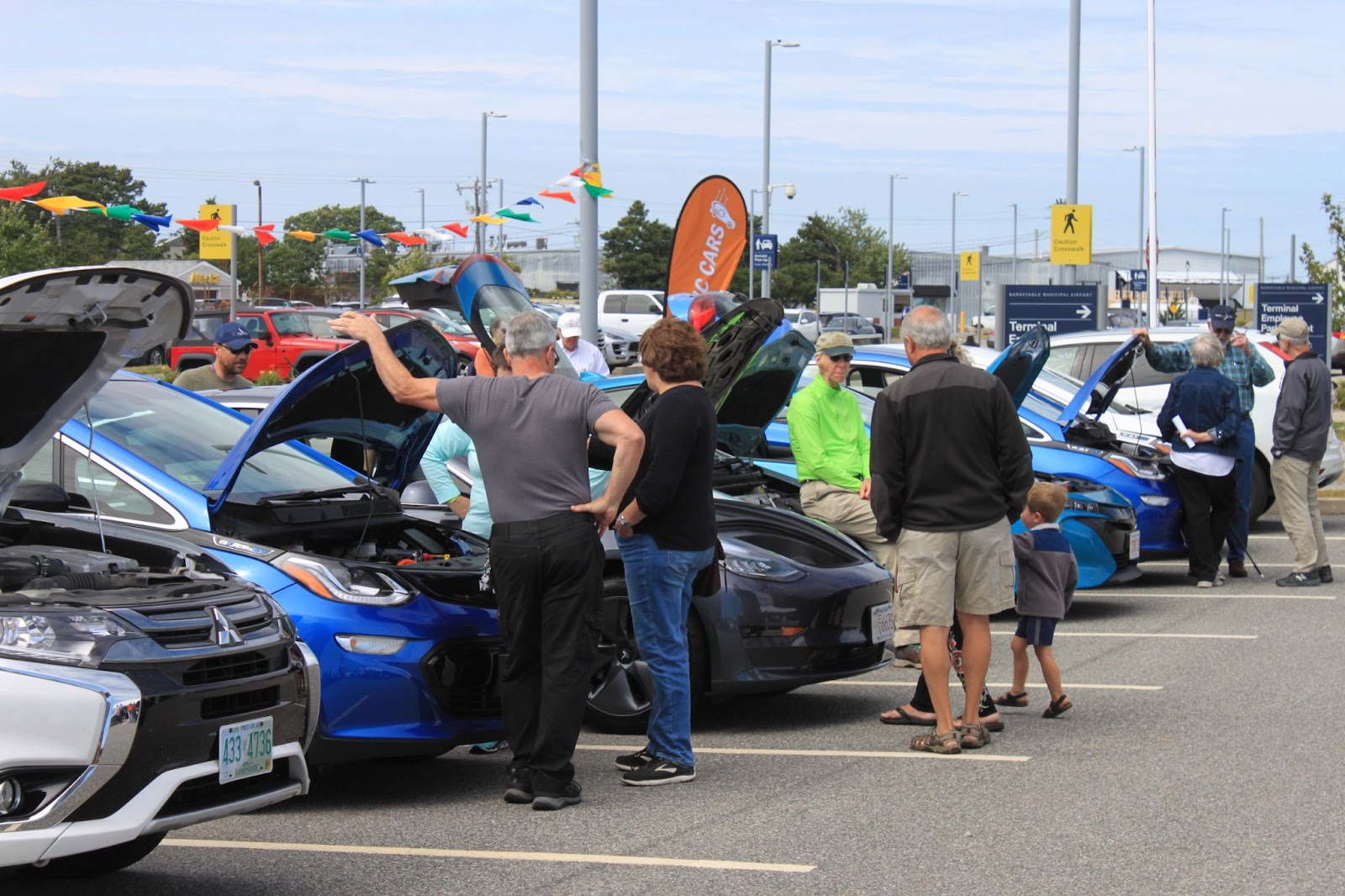By Valerie Lute
Did you know that if you buy an electric vehicle in Massachusetts, you may qualify for a rebate of up to $2,500 through the MOR-EV program? This program was created to encourage the adoption of battery electric vehicles (BEVs), fuel cell electric vehicles (FCEVs), and certain plug-in hybrid electric vehicles (PHEVs). Since the program began in 2014, it has given out over $51 million for over 25,000 vehicles while reducing carbon emissions to protect our environment.
Proposed Program Changes
The Massachusetts Department of Energy Resources (DOER) is considering making changes to the program which would increase the benefits for our climate. These changes include implementing a point of sale rebate, reducing the vehicle price cap, limiting plug-in hybrid electric vehicle eligibility, and creating additional incentives for low and middle income drivers.
Implement Point of Sale Rebate
 Currently, the only way to apply for the rebate is online at the MOR-EV website. Massachusetts does not offer rebates at the dealership where you purchase your vehicle. You must instead file out the online form with the VIN number, purchase details and the name of your dealership and salesperson within three months of your vehicle purchase or lease. The DOER will then send out the rebate check within 90 days of application approval.
Currently, the only way to apply for the rebate is online at the MOR-EV website. Massachusetts does not offer rebates at the dealership where you purchase your vehicle. You must instead file out the online form with the VIN number, purchase details and the name of your dealership and salesperson within three months of your vehicle purchase or lease. The DOER will then send out the rebate check within 90 days of application approval.
Many other states have made it easier for consumers to access electric vehicle rebates by making it available at the point of purchase. For instance, with the Delaware Clean Vehicle Rebate program, consumers receive rebates of $2,500 at participating dealerships where they purchase their vehicle. Dealerships who participate in New York’s Drive Clean Rebate, fill out the paperwork on behalf of the customer and give an immediate rebate of up to $2,000. These programs help make electric vehicles more accessible and as long-time advocates for this measure, Sierra Club is encouraged that Massachusetts will be implementing this soon.
DOER will be reaching out to auto dealerships before implementing the program, and plans to roll out point of sale rebates by fall 2022. Eventually, the DOER hopes to phase out post-purchase rebates once enough dealerships are on board with rebates at the point of sale.
Reduce Vehicle Price Cap
Right now, the MOR-EV program offers rebates for new vehicles with a purchase price under $50,000. The DOER is considering lowering the cap to $47,500 by fall 2022 and implementing phased $2,500 reductions until reaching a cap of $42,500. Reducing the price cap for vehicles eligible for the rebate will ensure that the funding available for the program reaches those who need it the most.
However due to the current inflation and supply chain issues, the price of electric vehicles is on the rise. According to Business Insider, the price Americans are paying for electric vehicles jumped 22% from May 2021 to May 2022. The cost of essential materials for electric vehicles batteries, such as nickel, cobalt, and lithium, have been affected by long term supply chain shortages, further exacerbated by the war in Ukraine. This means the average price for an electric vehicle is now over $54,000, over the MOR-EV cap. Just one year ago, they were paying closer to $44,000, well within its limits. It is essential that the DOER review and adjust the price cap at least twice a year to reflect existing economic conditions.
Limit Plug-in Hybrid Electric Vehicles
While plug-in hybrid electric vehicles were once a great stepping stone to battery electric vehicles for many consumers, with limited funding, preference should be given to accelerating adoption of all-electric vehicles that will result in the most emission reductions.
The DOER is planning on updating the program so that rebates will be available for plug-in hybrids only when there are not multiple battery electric vehicle models in the same price range and class. This would mean that subcompact and small sedans like Honda Clarity, Hyundai Ioniq and Toyota Prius Prime, as well as SUVs such as Ford Escape, Hyundai Tucson,Kia Niro, Toyota RAV4 Prime would no longer be eligible.
Low and Middle Income Driver Incentives
Massachusetts has a goal of having one million passenger electric vehicles on the road by 2030. This can only be achieved by making electric vehicles affordable and accessible to all.
The DOER is considering implementing an additional tiered rebate level for new EV purchases for low-and medium-income (LMI) drivers by fall 2022. The DOER is also considering a separate used electric vehicle rebate program for LMI drivers.
Conclusion
Emissions from transportation make up approximately 42 percent of the Commonwealth’s greenhouse gas emissions. Strong electric vehicle policies in combination with a robust public transportation system, safe walking and biking options are key to reducing that number. The proposed changes to the MOR-EV rebate program are an effective way to make electric vehicles more affordable, especially for low and middle income drivers.
Valerie Lute is a Sierra Club volunteer.
Photo Credit: Cape Air